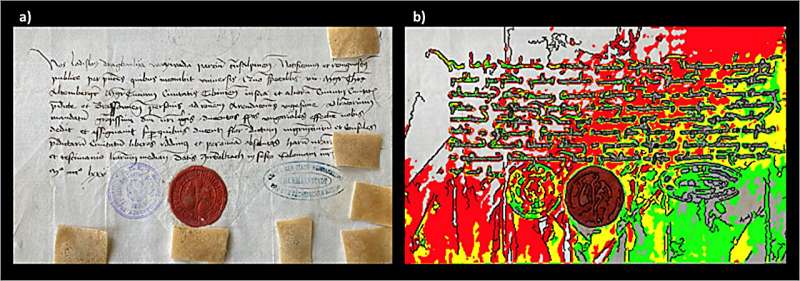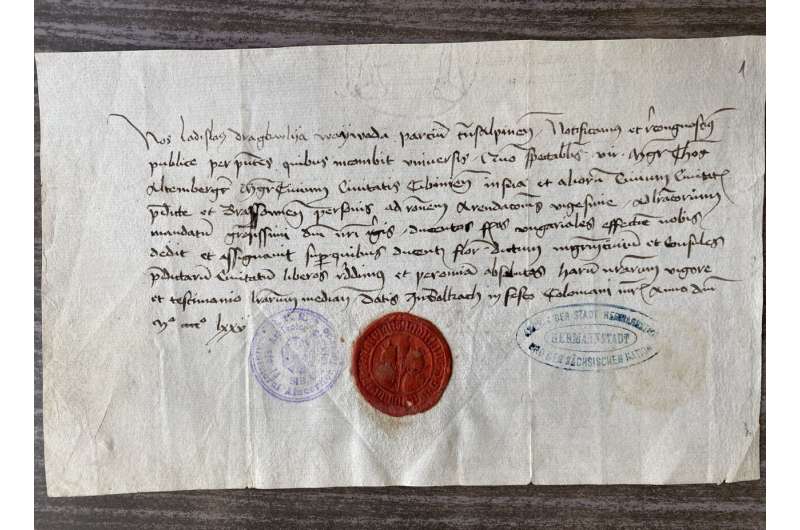August 10, 2023 report
This article has been reviewed according to Science X's editorial process and policies. Editors have highlighted the following attributes while ensuring the content's credibility:
fact-checked
peer-reviewed publication
trusted source
proofread
Testing of Vlad the Impaler's letters show he may have had condition causing his tears to be mixed with blood

A team of chemical scientists from the University of Catania, SpringStyle Tech Design Ltd, Romania National Archives and Politecnico di Milano, Via Mancinelli, has found evidence suggesting that Vlad the Impaler, may have suffered from a variety of ailments, including one that could have made the famous prince cry tears mixed with blood. In their paper published in the journal Analytical Chemistry, the group describes their analysis of proteins and peptides from three letters written by Vlad Drăculea and what they learned from them.
Count Vlad Drăculea, also known as Vlad the Impaler, and possible inspiration for the fictional character Dracula, was the ruler of Wallachia during the 15th century. He was known to be a fierce defender of his land. Historians have found evidence suggesting he was responsible for the deaths of as many as 80,000 Ottoman people, many of whom died due to impalement.
In this new study, the researchers wondered what sorts of ailments, if any, might have plagued the ruthless leader. To find out, they obtained and analyzed three documents written by the Count.
When writing by hand, it is common for the person doing the writing to touch the paper. Initially such touching would involve use of the fingers for paper placement on a surface, such as a desk. Thereafter, the lower parts of the palm would rest against the paper as writing was conducted. Both activities result in various chemicals and molecules transferring from the skin to the paper. In their work, the research team looked for them on the papers, and once found, traced their typical origins.
To capture material from the paper without causing damage, the team used a technique that involves applying and removing ethylene-vinyl acetate. Then once removed, the material was tested using mass spectrometry. The team found residue containing more than 500 peptides, which they narrowed to 100 of human origin.

From those, they found evidence of ciliopathy, a genetic disorder that compromises cell function and organs. They also found evidence of inflammatory disease, likely resulting in problems with the respiratory tract and skin. And they found compounds that suggested the Count also suffered from hemolacria—a condition that causes blood to mix with fluid in the tear ducts, resulting in blood-tinged tears.
More information: Maria Gaetana Giovanna Pittalà et al, Count Dracula Resurrected: Proteomic Analysis of Vlad III the Impaler's Documents by EVA Technology and Mass Spectrometry, Analytical Chemistry (2023). DOI: 10.1021/acs.analchem.3c01461
Journal information: Analytical Chemistry
© 2023 Science X Network





















